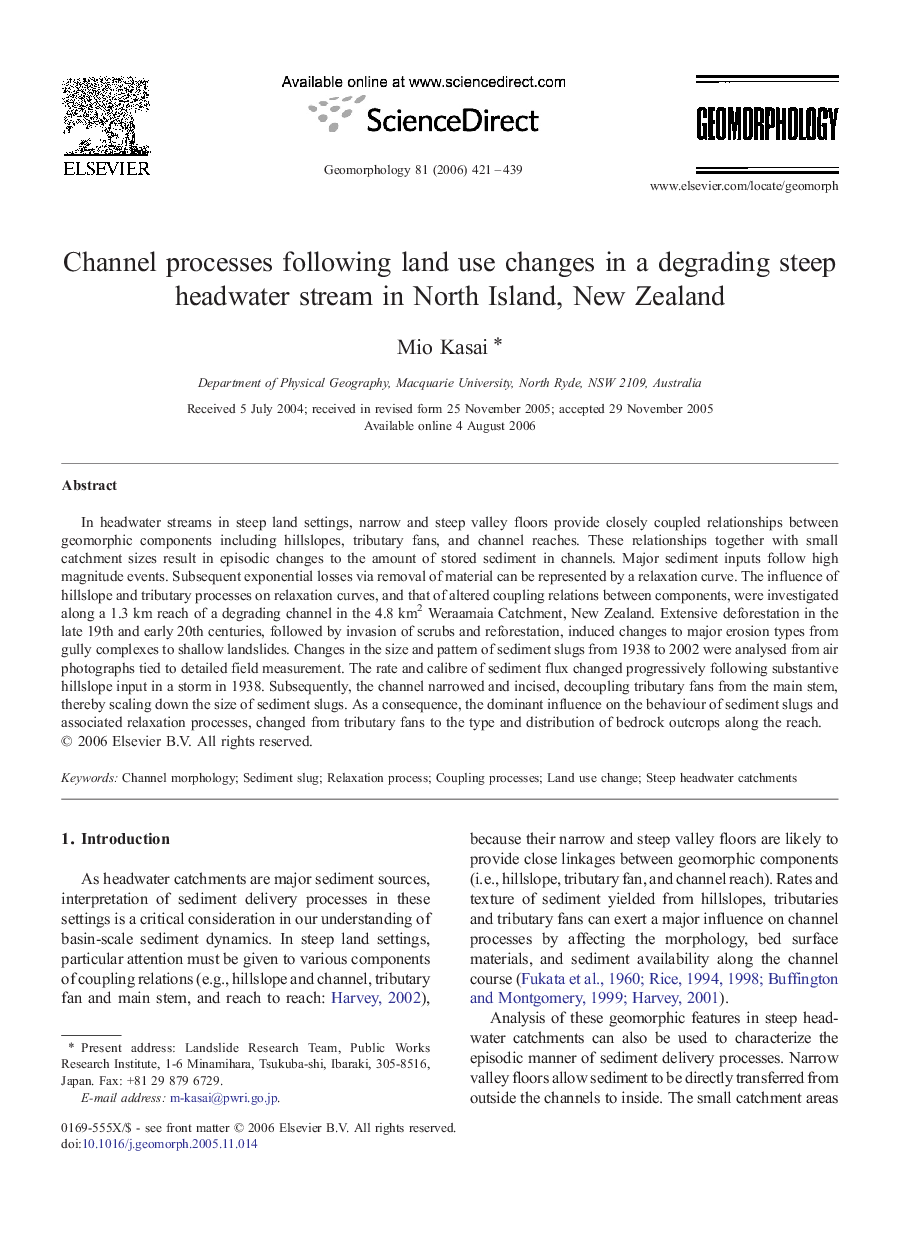| Article ID | Journal | Published Year | Pages | File Type |
|---|---|---|---|---|
| 4687372 | Geomorphology | 2006 | 19 Pages |
In headwater streams in steep land settings, narrow and steep valley floors provide closely coupled relationships between geomorphic components including hillslopes, tributary fans, and channel reaches. These relationships together with small catchment sizes result in episodic changes to the amount of stored sediment in channels. Major sediment inputs follow high magnitude events. Subsequent exponential losses via removal of material can be represented by a relaxation curve. The influence of hillslope and tributary processes on relaxation curves, and that of altered coupling relations between components, were investigated along a 1.3 km reach of a degrading channel in the 4.8 km2 Weraamaia Catchment, New Zealand. Extensive deforestation in the late 19th and early 20th centuries, followed by invasion of scrubs and reforestation, induced changes to major erosion types from gully complexes to shallow landslides. Changes in the size and pattern of sediment slugs from 1938 to 2002 were analysed from air photographs tied to detailed field measurement. The rate and calibre of sediment flux changed progressively following substantive hillslope input in a storm in 1938. Subsequently, the channel narrowed and incised, decoupling tributary fans from the main stem, thereby scaling down the size of sediment slugs. As a consequence, the dominant influence on the behaviour of sediment slugs and associated relaxation processes, changed from tributary fans to the type and distribution of bedrock outcrops along the reach.
